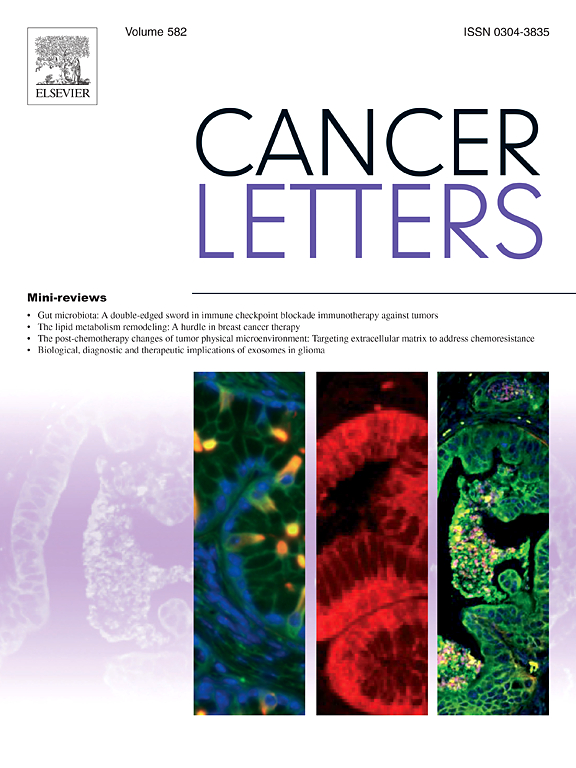Selective removal of proteins and microvesicles ex vivo from blood of pancreatic cancer patients using bioengineered adsorption filters
IF 9.1
1区 医学
Q1 ONCOLOGY
引用次数: 0
Abstract
Metastatic pancreatic ductal adenocarcinoma (PDAC) is a deadly disease with limited efficacious therapeutic options. Recent investigations have provided proof of concept that circulating tumor cells (CTCs) are reduced by purification of PDAC patient blood samples through ExThera Seraph100™ adsorption filters. Whether additional tumorigenic factors are also removed remains inadequately studied. Here, matched whole blood and purified blood samples from seven PDAC patients were analyzed for microparticle and soluble protein content. For microparticle analysis, patient samples were stratified by abundance. Filters markedly reduced ∼200-nm particles when in high abundance. Exosomes, or vesicles ranging from ∼50 to 150-nm were not significantly affected by the purification process. Proteomic analysis of plasma from the whole and purified blood revealed only a limited number of differentially expressed proteins. The complement C1Q proteins were reduced by the purification process, likely due to their heparin binding affinity. In contrast, there was an elevation in cytoplasmic proteins after purification, which may be due to cell destruction. Taken together, this study shows the selective removal of a subfraction of larger (>200 nm) microvesicles and C1Q during blood purification by the Seraph100™. The clinical significance of these findings requires further study.
求助全文
约1分钟内获得全文
求助全文
来源期刊

Cancer letters
医学-肿瘤学
CiteScore
17.70
自引率
2.10%
发文量
427
审稿时长
15 days
期刊介绍:
Cancer Letters is a reputable international journal that serves as a platform for significant and original contributions in cancer research. The journal welcomes both full-length articles and Mini Reviews in the wide-ranging field of basic and translational oncology. Furthermore, it frequently presents Special Issues that shed light on current and topical areas in cancer research.
Cancer Letters is highly interested in various fundamental aspects that can cater to a diverse readership. These areas include the molecular genetics and cell biology of cancer, radiation biology, molecular pathology, hormones and cancer, viral oncology, metastasis, and chemoprevention. The journal actively focuses on experimental therapeutics, particularly the advancement of targeted therapies for personalized cancer medicine, such as metronomic chemotherapy.
By publishing groundbreaking research and promoting advancements in cancer treatments, Cancer Letters aims to actively contribute to the fight against cancer and the improvement of patient outcomes.
 求助内容:
求助内容: 应助结果提醒方式:
应助结果提醒方式:


